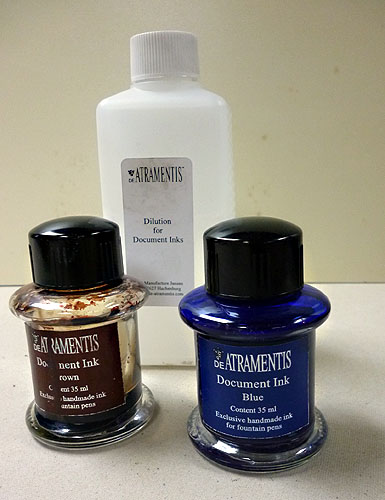People who follow my blog know that I’m a pen guy. I used fountain pens long before I started trying to draw so it just seemed natural that I should use one as my drawing tool. In fact, I was told that this was THE way to learn to draw by those who hung out in sketching groups. Working with pen, it was said, would make me see better, make better decisions, improve my hand-eye coordination, and a whole slew of other great benefits.
Five years later I’m still using a fountain pen as my principal drawing tool. More importantly, I can better assess all those well-meaning people who were advocating the use of ink to learn to draw. And you know what? I don’t think they were talking about ink at all. They were talking about erasers. They were talking about being sure about where you wanted to put a line before you put it. They were talking about not spending a lot of time erasing and replacing lines. When they said ink would improve my ability to see, they were really saying “If you know you can’t erase, you’ll pay more attention before you make a line.”
I suppose, they were right, BUT that is not the whole story. There is room for pencil in the drawing process, even if you ultimately use fountain pens as your primary drawing tool. For instance, I use a pencil when I start most drawings. I use it to generate layout lines, to evaluation locations, major angles, and object sizes BEFORE I start thinking about drawing actual objects. This is a step that pro artists may do in their heads but they are nevertheless doing it. Less skilled folks, like me, need the pencil lines to evaluate those relationships and correct those they got wrong BEFORE they actually start drawing the outlines of the objects they’re trying to capture. Most beginners skip this step completely. I might talk about this at a later date but today I want to talk about a more fundamental reason to use a pencil to actually draw.
Using ink causes people to concentrate mostly on outline. Whether it is buildings or people, basic lessons of contour drawing are very evident and, for the most part, that’s where the process of drawing ends for most people. They may follow up with watercolor or maybe even hatching but these are done as after-the-fact processes once the contours are all drawn.
But if you draw with a pencil you start thinking more about form and less about outline. Folds in clothes become areas of tone rather than a single line. Curves become gradients of tone, or they should as the surfaces change their angles with respect to the light. If you’ve ever tried to turn a circle into a sphere with a fountain pen you know how difficult this is, but with a pencil it’s a quite natural thing to do.
Because of this, drawing with a pencil will teach you more about seeing and creating tonal variation than will using a fountain pen. You’ll concentrate more on 3-dimensional form rather than outline. In short, you’ll start seeing in a different way and in doing so, even your fountain pen drawing will improve.
Because of this, I try to draw something in pencil every once in a while. I always find it a struggle because I’m a left-handed sketcher who drags his hand across the drawing as I draw. The smudging that results is not pretty. The fact that I don’t do it as much as I should also limits what I can achieve, but each time I get a little bit better and I see just a bit better. I also gain a keen appreciation for the pencil as a sketching tool.
Here’s a drawing I did of a statue in our museum. I did it with a 0.5mm mechanical pencil which is a convenient tool, but probably not optimal for doing pencil drawings. Please excuse my smudging; I’m just a lowly pen driver afterall. Do you ever draw in pencil?











